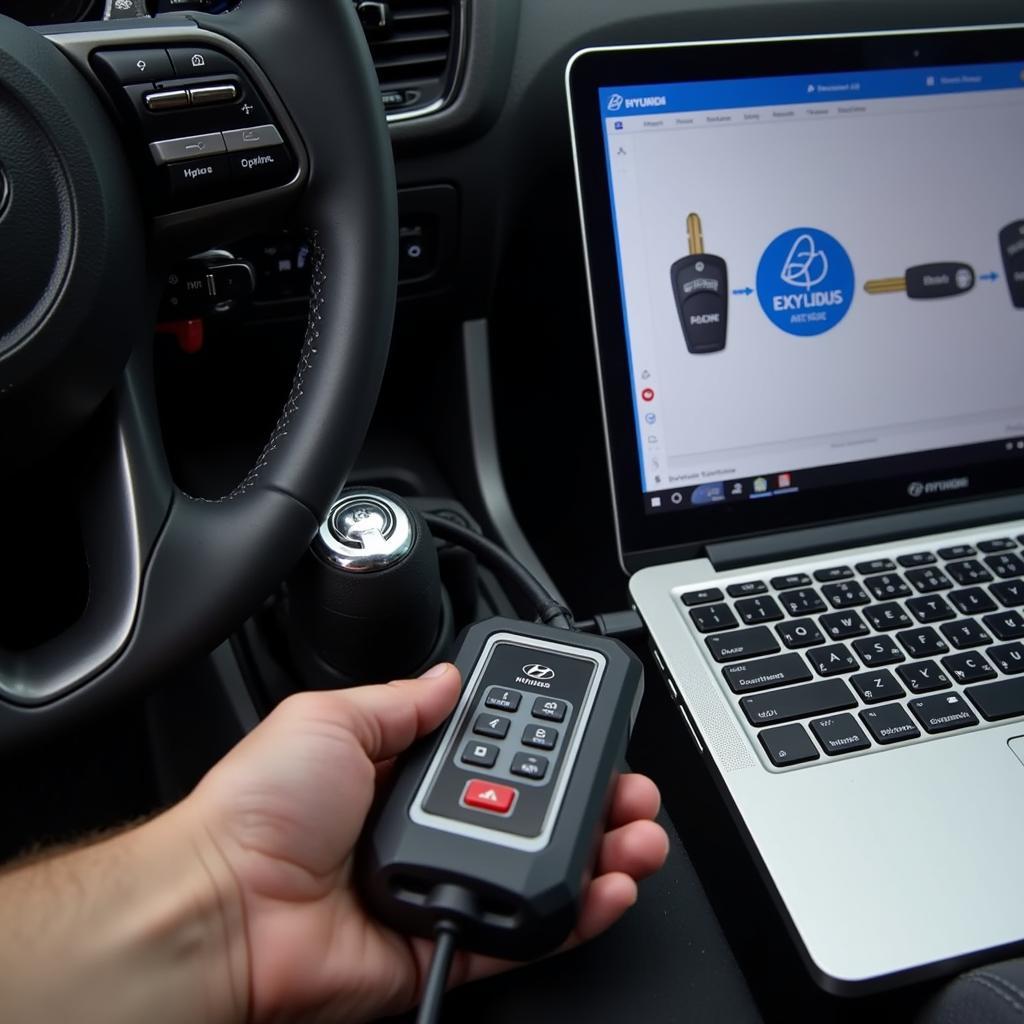Understanding how to wire a car stereo wiring harness is crucial for a successful car audio upgrade. A properly wired harness ensures your new stereo functions correctly and avoids potential damage to your car’s electrical system. This guide will provide a comprehensive walkthrough of the process, from identifying the wires to making the final connections.
Similar to a car stereo radio wiring adaptor, the wiring harness acts as a bridge between your car’s electrical system and your aftermarket stereo. It simplifies the installation process, eliminating the need to cut and splice your car’s original wiring. This not only saves time but also preserves the integrity of your car’s electrical system, making it easier to revert to the original stereo if needed.
Understanding Your Car Stereo Wiring Harness
Before diving into the wiring process, it’s essential to understand the components of a car stereo wiring harness. Typically, a harness consists of multiple wires, each with a specific function and color code. These color codes are generally standardized, but it’s always recommended to consult your car’s wiring diagram for confirmation. A common mistake is assuming universal compatibility, which can lead to incorrect wiring and potential damage.
Identifying the Power, Ground, and Speaker Wires
The most important wires to identify are the power, ground, and speaker wires. The power wire usually has a red or yellow color code and is connected to the car’s battery through a fuse. The ground wire, typically black, provides a return path for the electrical current and should be connected to a metal part of the car’s chassis. The speaker wires come in pairs and are color-coded to differentiate between positive and negative terminals for each speaker. Accurately identifying these wires is paramount for a functional and safe installation.
Connecting the Wiring Harness to Your Car Stereo
Once you’ve identified the wires, the next step is connecting them to the corresponding wires on your car stereo. Most aftermarket stereos come with a wiring diagram that indicates the function of each wire. Match the colors and functions of the wires on the harness to those on the stereo’s wiring diagram. Use crimp connectors or solder to create secure connections and ensure proper contact. Loose connections can lead to intermittent audio or even complete system failure.
Using Crimp Connectors or Soldering for Secure Connections
Crimp connectors provide a quick and easy way to connect wires, but soldering offers a more permanent and reliable connection. If you choose to solder, make sure to use the appropriate type of solder and flux for electrical connections. Heat shrink tubing is also recommended to insulate the soldered connections and prevent short circuits. Choosing the right connection method will ensure the longevity and reliability of your car stereo installation.
Testing Your Car Stereo Installation
After connecting all the wires, it’s crucial to test the installation before fully assembling the dashboard. Connect the car’s battery and turn on the stereo to check if it powers on and produces sound from all the speakers. If everything works correctly, you can proceed with securing the stereo and reassembling the dashboard. This testing phase is crucial to avoid any surprises after completing the installation.
Troubleshooting Common Wiring Issues
If your stereo doesn’t power on or the speakers don’t produce sound, double-check all the connections to ensure they are secure and correctly wired. A 2003 hyundai accent car radio stereo wiring diagram can be a helpful resource if you encounter issues. Consult online forums or contact a professional car audio installer if you need further assistance. Remember, patience and attention to detail are key to a successful car stereo installation.
Similar to a car audio radio stereo wiring harness 2 pin wire adapter, the harness can have different pin configurations. It’s essential to check the specifications of both the harness and your stereo to ensure compatibility.
Conclusion
Wiring a car stereo wiring harness might seem daunting at first, but with careful planning and execution, it can be a rewarding DIY project. By following these steps and understanding the basics of car audio wiring, you can successfully upgrade your car stereo and enjoy a better listening experience on the road. Remember to always consult your car’s wiring diagram and double-check all connections to ensure a safe and functional installation. Just like understanding how to wire a car stereo wiring harness, other car audio upgrades can also be handled with proper research and patience.
FAQ
- What is a car stereo wiring harness? A car stereo wiring harness is an adapter that connects an aftermarket stereo to your car’s electrical system without cutting the factory wires.
- Why do I need a wiring harness? It simplifies installation, prevents damage to the car’s wiring, and makes it easy to revert to the original stereo.
- How do I identify the wires in a wiring harness? Consult your car’s wiring diagram and the stereo’s manual for color codes and functions.
- What’s the difference between crimp connectors and soldering? Crimping is quicker, while soldering provides a more permanent connection.
- What should I do if my stereo doesn’t work after installation? Double-check all connections and consult troubleshooting guides or seek professional help.
- Where can I find a wiring diagram for my car? You can usually find it in the car’s service manual or online resources.
- Do all car stereo wiring harnesses fit all cars? No, harnesses are vehicle-specific, so choose one compatible with your car’s make and model. Understanding resources like a jvc-car-stereo-radio-wire-wiring-harness-plug-16-pin is also crucial. Similarly, knowing about car stereo hyundai radio wiring color codes can be helpful.


